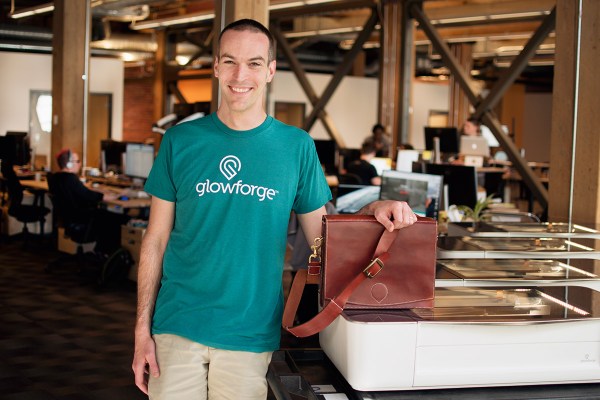Of all the ways to make a 3-dimensional object, 3D printing is still the freshest, whether what’s involved is plastic extrusion, milling away wood or metal, or the spinning of cells into functional living tissues.
Now, a company that makes a desktop laser cutter and engraver for home or office use, Glowforge, has raised $22 million to start mass production of its devices. The startup also plans to roll out a catalog of materials and premium designs for makers of every stripe, said CEO and founder Dan Shapiro.
Glowforge originally ran a crowdfunding campaign on its own site where it generated $27.9 million in pre-sales for its flagship device. It also raised $9 million in seed and Series A funding previously.
Founded in Seattle by repeat entrepreneur and angel investor Dan Shapiro — previously the CEO of Sparkbuy, a comparison tech shopping site acquired by Google — Glowforge today employs 35 full-time.
Shapiro said the funding would be used for hiring and manufacturing, but also to help Glowforge make its new brand of “Proofgrade” materials known to users.
The company has developed the Proofgrade line of materials with a coating that peels off after the materials are cut to specifications.
A user can draw on the Proofgrade coating with any black, permanent marker and the laser will automatically cut or engrave along those lines, Shapiro noted.
The coating has a UV bar code printed on it, which signals a Glowforge to automatically switch on the correct settings for handling that material, alleviating one of the frustrations of 3-D printing for new users.
The company has worked with materials scientists to custom fabricate leathers, wood, acrylic and postboard so that they can be cut quickly, even if a design is intricate, with high-quality results, namely smooth edges.
Foundry Group and True Ventures, early backers of Glowforge, again invested in the startup’s Series B round.
Foundry’s Brad Feld compared Glowforge to one of his earlier, and successful, investments in the nascent market of 3-D printing, Makerbot.
Makerbot’s 3D printers brought fused deposition modeling (FDM), rather than laser cutting, out of the factory and down to the desktop. The company was acquired by Stratasys for $403 million in a deal first announced in 2013.
“In addition to extremely compelling hardware, Glowforge has put a ton of energy into their software and community, which is [a] hallmark of disruption in this type of a product as you shift from high end professionals only to the ‘prosumer,’” Feld said.
The Glowforge has been known among culinary enthusiasts for its ability to cut through edible ingredients like chocolate and seaweed to make decorative sushi. The company is investigating what ingredients it could add to its Proofgrade line if any, Shapiro said.
One of Glowforge’s packages, the Glowforge Pro, includes an air filter and a pass through slot that allows users to cut over-sized materials, essentially an extra long plank of wood or roll of leather.
The company advises all customers to use an air filter, or vent outside, as laser cutting inherently generates fumes or smoke.
Glowforge faces competition from a spate of 3-D printers and “personal fabrication devices” aimed at the maker community, and from makers of laser cutters such as FSLaser and EpilogLaser, which have primarily targeted business users.
To see a Glowforge in action, watch TechCrunch’s hands on video report from December last year.
